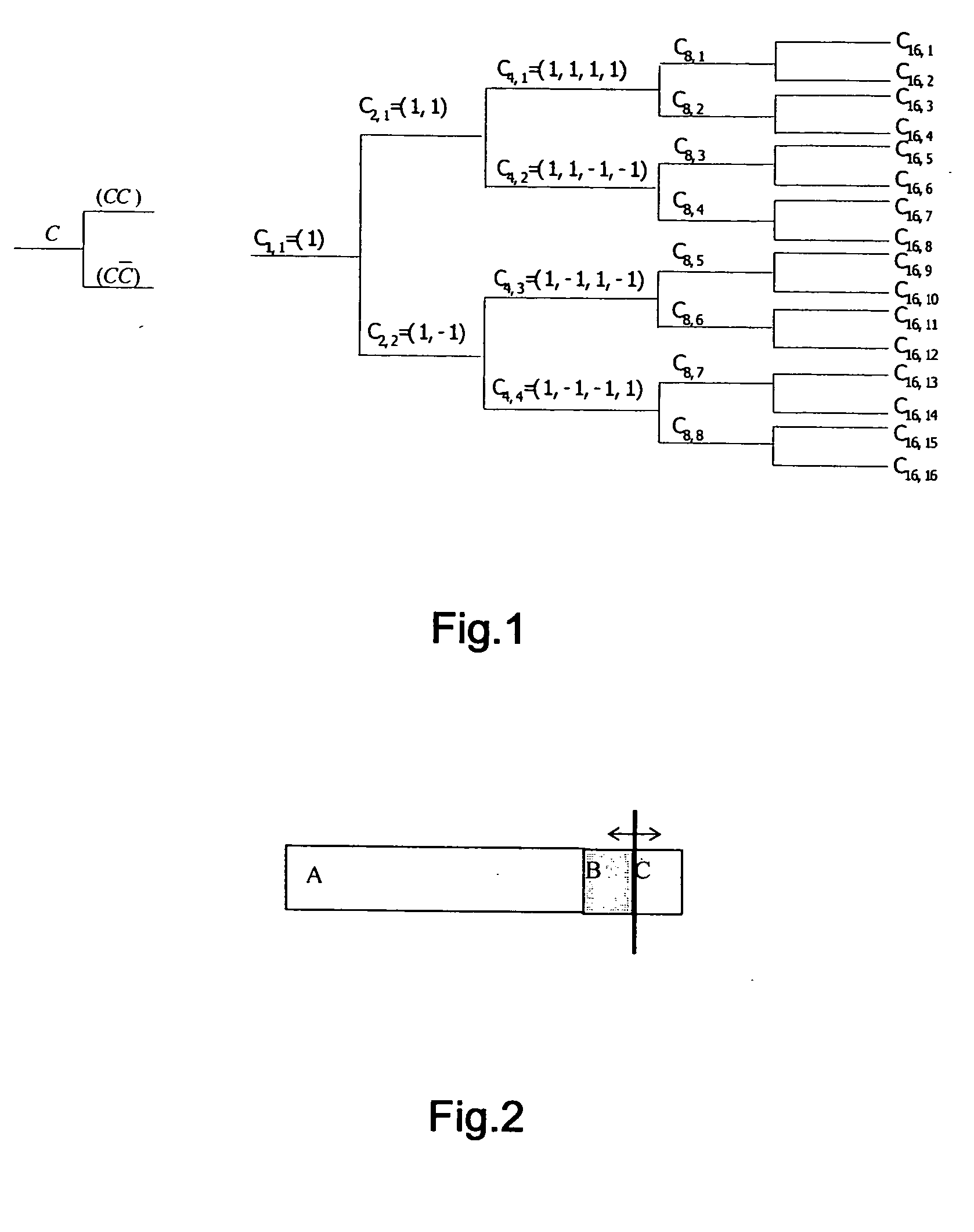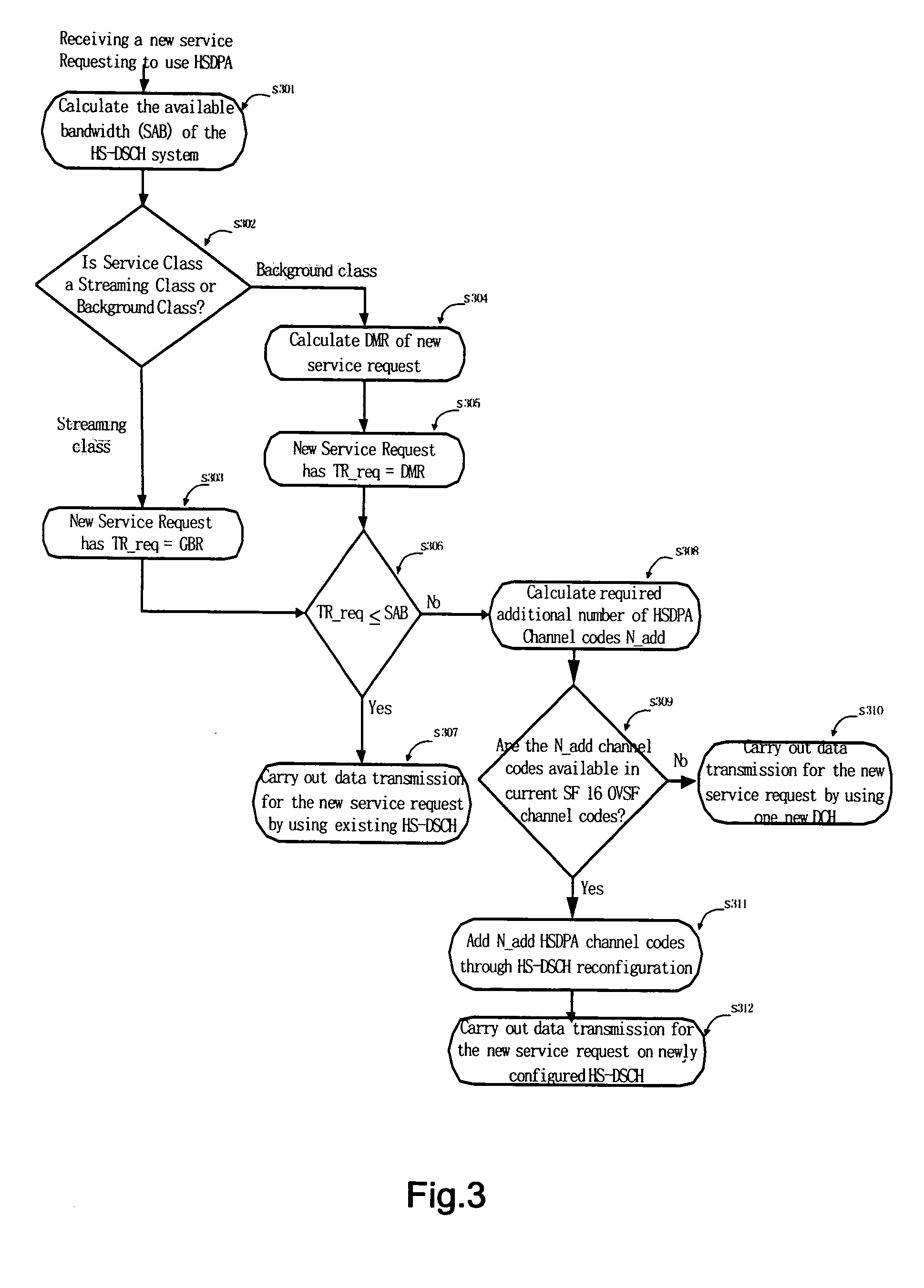Effective dynamic management scheme of HS-DSCH channel codes
a dynamic management scheme and channel code technology, applied in the field of high-speed downlink packet access technology, can solve the problems of wasting code resources without any beneficial effect of improving system capacity, unable to effectively use finite ovsf code resources in the wcdma system employing hsdpa technology, etc., to achieve effective improvement of the hs-dsch channel code usage ratio, improve the overall system performance, and improve the service request receiving and processing success ratio
- Summary
- Abstract
- Description
- Claims
- Application Information
AI Technical Summary
Benefits of technology
Problems solved by technology
Method used
Image
Examples
Embodiment Construction
[0039] The present invention will be described in detail with reference to the accompanying drawings for different preferred embodiments described below.
[0040] Based on the operational characteristic of the bearer service and the QoS requirements, the 3GPP protocol divides the existing services into four classes depending on the QoS service classes, namely Conversation Class, Interactive Class, Streaming Class and Background Class. Each of the service classes defines different requirements on QoS that provides a priority for adoption to the HSDPA transmission mode for signal transmission in accordance with the functional features of the HSDPA transmission mode and services of the streaming class and background class.
[0041] The present invention considers the facts that the services that adopt HSDPA for transmission are mostly streaming class and background class. A service request for these classes has a fixed total amount of data transmitted in a HS-DSCH channel. Cosndering these...
PUM
 Login to View More
Login to View More Abstract
Description
Claims
Application Information
 Login to View More
Login to View More - R&D
- Intellectual Property
- Life Sciences
- Materials
- Tech Scout
- Unparalleled Data Quality
- Higher Quality Content
- 60% Fewer Hallucinations
Browse by: Latest US Patents, China's latest patents, Technical Efficacy Thesaurus, Application Domain, Technology Topic, Popular Technical Reports.
© 2025 PatSnap. All rights reserved.Legal|Privacy policy|Modern Slavery Act Transparency Statement|Sitemap|About US| Contact US: help@patsnap.com



